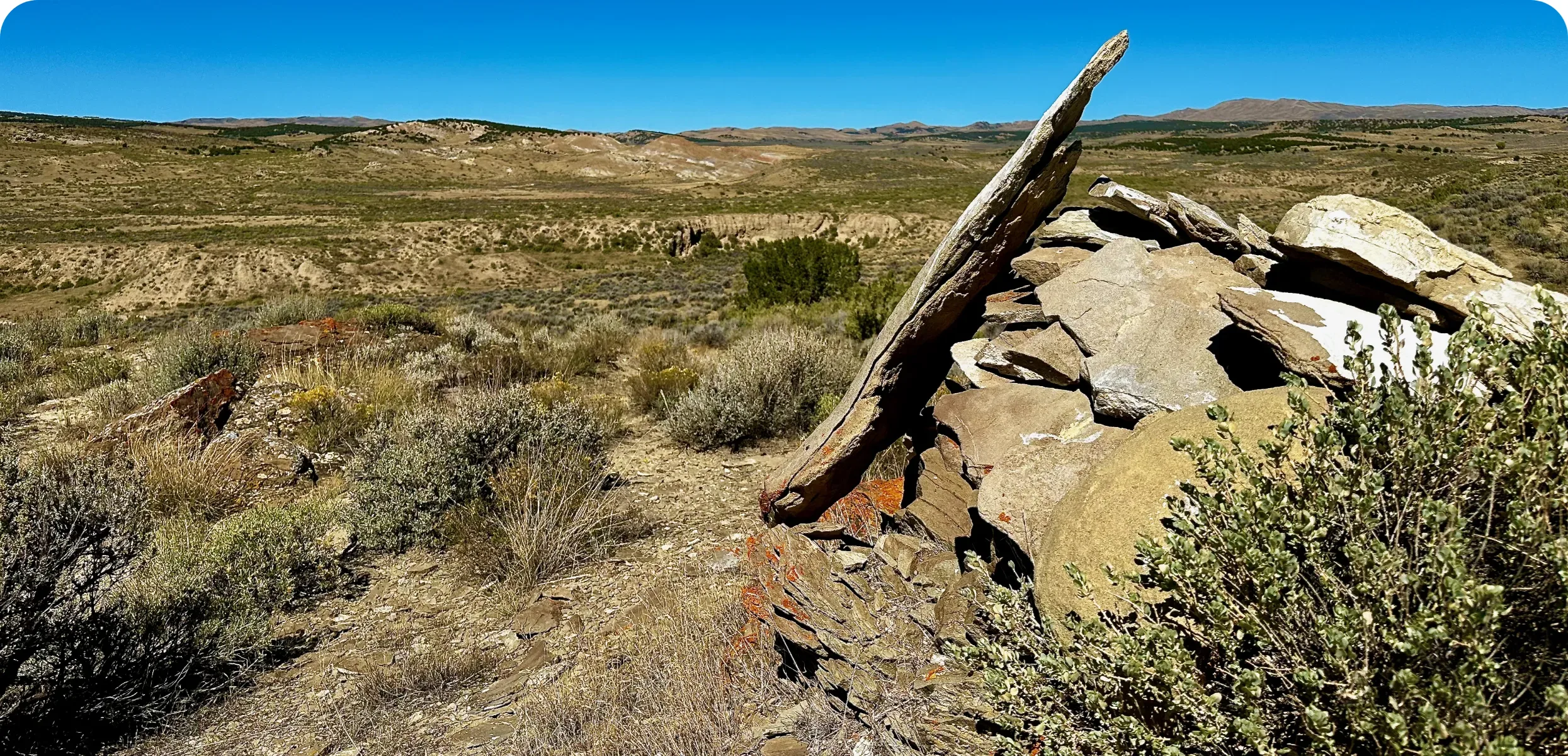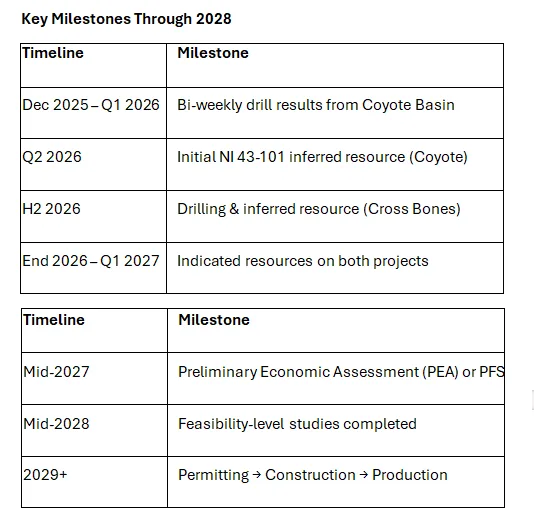
This article is based on the things said in the video interview. This is a paid/sponsored content
The uranium sector has rarely looked more compelling. A confluence of surging global nuclear demand, supply-chain insecurity, and a dramatic shift in political support for nuclear energy has created what many analysts describe as the strongest bull market in the commodity’s history. Against this backdrop, Homeland Uranium Corp. is emerging as one of the few pure-play U.S.-focused uranium development stories with near-term resource delineation potential and a clear path toward low-cost heap-leach production.
Homeland Uranium President and CEO Roger Lemaitre provided a comprehensive update on the company’s strategy, assets, drilling program, and outlook for the uranium market heading into 2026 and beyond.
The Uranium Market in 2025–2026: A Fundamental and Permanent Shift
Lemaitre, a 25-year industry veteran who previously held senior roles at Cameco and led UEX Corporation to a successful sale, offered a seasoned perspective on today’s uranium market.
“The last 12 months have been extraordinarily volatile on the spot price,” Lemaitre noted, “but the term price has been on a slow and steady climb. Term is what really matters.”
He emphasized that the spot market, while attention-grabbing, is not the true barometer of the sector’s health. Most spot pounds eventually roll into long-term contracts, and it is the term market where utilities secure the fuel they need for decades.
What has changed irreversibly, according to Lemaitre, is the global political and social acceptance of nuclear power.
“I’ve never seen a robust acceptance of nuclear like we’re seeing today across all political spectrums… Even if countries only increase nuclear output by 25% instead of the more aggressive tripling scenarios being discussed, primary mine supply simply cannot keep pace.”
He highlighted that even traditionally conservative bodies such as the World Nuclear Association (WNA) and the International Energy Agency (IEA) are now openly acknowledging a structural supply deficit for the remainder of the decade and beyond.
Analyst price targets reflect this optimism. Bank of America recently issued a $135/lb uranium forecast for 2026, while other major institutions have targets ranging from $120–$150/lb in the medium term.
U.S. Domestic Supply Push: A Tailwind for Homeland
Recent announcements from the U.S. Department of Energy and Treasury, including the November 2025 strategic framework for securing domestic uranium supply chains, underscore Washington’s urgency to reduce reliance on foreign (particularly Russian and Chinese-controlled) uranium.
Lemaitre was candid about where Homeland currently stands in that process:
“We’re not yet at the engineering stage where we can credibly sign government offtake agreements. You need a high-confidence timeline to production before those conversations become meaningful. That said, we are monitoring developments closely and know exactly who to speak with when the time is right.”
The company’s 100%-owned portfolio is entirely within Colorado, placing it squarely in the crosshairs of U.S. energy-security initiatives.
Portfolio Overview: District-Scale Projects in the Uravan Mineral Belt
Homeland controls three past-producing or historically defined uranium projects—all within a 25-km radius in western Colorado—offering the potential for centralized processing and significant operating synergies.
1. Coyote Basin Project (flagship – drilling underway)
· Discovered in 1979 by Western Mining Resources shortly before the Three Mile Island accident halted U.S. uranium development.
· Historical (non 43-101) resource of ~35 million pounds U₃O₈.
· Mineralization starts at surface and extends to ~75 m depth across multiple stacked sandstone horizons.
2. Cross Bones Project
· The Cross Bones Property is the result of the combination of the former Red Wash Project, acquired as part of the Coyote Basin Property transaction, and the Skull Creek Property purchase, which hosts the Cross Bones Uranium Deposit
· At-surface historical resource of ~44 million pounds U₃O₈ defined by Union Carbide and partners in the late 1970s.
The company’s vision is to develop two or more shallow open-pit/heap-leach operations feeding a central processing facility—leveraging modern alkaline heap-leach technology that has never been widely applied to U.S. sandstone-hosted deposits.
Coyote Basin Drilling Program: First Modern Campaign in 45 Years
Drilling commenced in mid-November 2025 with a C$5.5 million budget.
Phase 1 (2025):
· 35–50 confirmation and step-out rotary holes
· Average depth ~200 m (650 ft)
· Total ~17,000 ft (5,200 m)
· Targeting conversion of the historical 35 Mlb resource to an initial NI 43-101 inferred resource by mid-2026
Early observations (as of late November 2025):
· No major geological surprises yet, but typical sandstone-channel variability—some holes exceeding historical thicknesses and grades, others slightly underperforming due to paleochannel meanders.
· Down-hole prompt-fission neutron (PFN) probing is being used for real-time grade equivalents, with results expected every two weeks through year-end.
Metallurgical test work is running in parallel to confirm alkaline heap-leach amenability—an important de-risking step that could position Homeland as one of the lowest-cost U.S. producers.
Phase 2 (2026):
· Infill drilling to indicated category
· Scoping-level engineering studies
Cross Bones to Follow Six Months Behind Coyote
Field work at Cross Bones will ramp up in spring 2026, with drilling planned for the second half of the year. The company expects to deliver an initial inferred resource by year-end 2026, roughly six to eight months behind Coyote Basin.
Key Milestones Through 2028

M&A Strategy: Looking for 10+ Year Mine Life Opportunities
Lemaitre was clear that advancing Coyote Basin and Cross Bones organically remains the top priority, but the company is actively evaluating additional U.S. assets.
“We want projects that can ultimately support a 10-year mine life—roughly 20 million pounds for conventional or 10 million pounds for ISR. You need that scale to be a credible term-market supplier.”
He stressed that Homeland will remain strictly U.S.-focused, citing the growing domestic demand–supply gap and improving permitting environment.
A World-Class Team with Skin in the Game
Homeland boasts one of the strongest technical and capital-markets teams in the junior uranium space - Roger Lemaitre, Paul Matysek, Brent Cook, Rob Shewchuck.
Management and insiders own ~18% (much still in 3-year escrow), while the original Coyote vendors hold ~15%. Notable shareholders include Rick Rule (~3 million shares) and Sprott-affiliated entities.
Capital Position & Financing Environment
As of November 2025, Homeland sits on >C$10 million in cash with no debt.
Lemaitre observed a marked maturation in uranium investors this cycle: “Simply having ‘uranium’ in your name no longer raises $40 million. Investors are demanding resources and a clear path to production.”
He noted that companies with defined pounds and realistic timelines are raising larger amounts ($10–$20 million+) than in previous cycles.
Colorado vs. Athabasca Basin: A Different Risk–Reward Profile
Having spent much of his career in Saskatchewan’s Athabasca Basin, Lemaitre offered a direct comparison:
“Athabasca offers home-run, ultra-high-grade potential, but top-tier land is almost impossible to acquire now. Colorado is more of a ‘singles and doubles’ game—lower technical risk, known deposits, faster permitting, and strong U.S. government support.”
He highlighted that U.S. permitting timelines have shortened dramatically in recent years, while Canadian processes have lengthened.
News Flow for the Next 4–6 Months
Investors can expect:
· Bi-weekly drill results from Coyote Basin through December 2025 (PFN probe data)
· Lab assays confirming probe results in late January/February 2026
· Initial metallurgical results (heap-leach amenability) in Q1–Q2 2026
· Planning and permitting updates for 2026 Crossbones drilling
Conclusion
Homeland Uranium is uniquely positioned at the intersection of three powerful trends: (1) a structural global uranium bull market, (2) urgent U.S. domestic supply-chain initiatives, and (3) a permitting environment in Colorado that is becoming increasingly supportive of new uranium production.
With two large, shallow, historically defined deposits, a proven team, a clean balance sheet, and drilling underway on its flagship asset, Homeland has a clear runway of catalysts through 2026 and 2027 that could see it transition from explorer to one of the next U.S. uranium developers.
As Roger Lemaitre concluded: “If someone makes shareholders an offer they can’t refuse along the way, we’ll entertain it. But we are fully prepared—and funded—to take these projects all the way to production.”
For investors seeking U.S.-centric leverage to the unfolding nuclear renaissance, Homeland Uranium warrants close attention.
Disclaimer: This article is not a recommendation to buy any shares, products, or services. Always conduct your due diligence and consult with a financial advisor.
Sign up to our free monthly newsletter to recieve the latest on our interviews and articles.
By subscribing you agree to receive our newest articles and interviews and agree with our Privacy Policy.
You may unsubscribe at any time.
We use cookies to improve your experience on our site. By using our site, you consent to cookies.
Websites store cookies to enhance functionality and personalise your experience. You can manage your preferences, but blocking some cookies may impact site performance and services.
Essential cookies enable basic functions and are necessary for the proper function of the website.
These cookies are needed for adding comments on this website.
Statistics cookies collect information anonymously. This information helps us understand how visitors use our website.
Google Analytics is a powerful tool that tracks and analyzes website traffic for informed marketing decisions.
Service URL: policies.google.com (opens in a new window)
Marketing cookies are used to follow visitors to websites. The intention is to show ads that are relevant and engaging to the individual user.
You can find more information in our Privacy Policy.